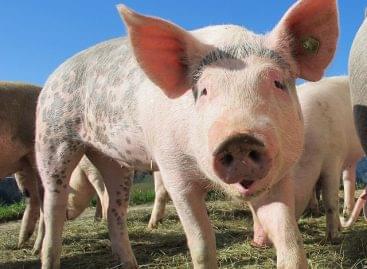You need to pay attention to neutral interest rates and the surcharge
The Hungarian economy is showing a gradual improvement as we approach the last months of the year, and a recovery is expected at the end of the year and in 2026, but growth is starting from a low base. According to current prospects, interest rates may decrease next February or March. An important factor in this regard is how the neutral interest rates of developed countries develop, which greatly influence the Hungarian room for maneuver – said Dávid Németh at his press conference on the situation of the Hungarian and international economies. In addition to the inflation trajectory, he also spoke about how productivity has developed and why improvement in this area is important.
 The Hungarian economy continues to perform poorly: in the third quarter, the economy essentially stagnated in a quarterly comparison, but showed 0.6 percent growth on an annual basis. Looking at previous figures, it is clear that there has been no sustained growth in quarterly results since mid-2022. According to the latest third-quarter data, services are the driving force on the production side, and on the consumption side, household consumption based on the increase in real wages. At the same time, industry and agriculture are holding back performance. Due to the low base data, we can see more favorable numbers in the coming quarters, but we only expect a substantial turnaround gradually – this was among other things said by Dávid Németh, K&H’s chief analyst, at the financial institution’s press conference in Budapest on Monday.
The Hungarian economy continues to perform poorly: in the third quarter, the economy essentially stagnated in a quarterly comparison, but showed 0.6 percent growth on an annual basis. Looking at previous figures, it is clear that there has been no sustained growth in quarterly results since mid-2022. According to the latest third-quarter data, services are the driving force on the production side, and on the consumption side, household consumption based on the increase in real wages. At the same time, industry and agriculture are holding back performance. Due to the low base data, we can see more favorable numbers in the coming quarters, but we only expect a substantial turnaround gradually – this was among other things said by Dávid Németh, K&H’s chief analyst, at the financial institution’s press conference in Budapest on Monday.
Inflationary caution
He said about the development of inflation that September’s 4.3 percent inflation fell slightly short of expectations, which indicates the strengthening of favorable trends. The increase in food prices is slowing, the prices of durable consumer goods are barely increasing, while a slowdown is also being experienced in services. “By the end of the year, it may slow down to around 3.5 percent, and by the beginning of next year, the pace may fall below the central bank’s 3 percent target,” the expert emphasized. He added that the margin freeze, which was recently extended until the end of February, continues to distort inflation data. This means that the real inflation picture is more unfavorable than what official statistics show.
Due to the development of inflation, the Magyar Nemzeti Bank continues to pursue a cautious policy. The base rate is 6.5 percent and it will likely end the year at this level. According to Dávid Németh, the next interest rate cut may take place in February or March at the earliest.
“The MNB’s decisions largely depend on the actions of the most significant central banks, such as the US Fed. From this perspective, it is important to see how the neutral interest rates of developed markets develop. They decreased from the 1970s until the coronavirus pandemic, but since then they have seen a slight increase, which determines the Hungarian central bank’s room for maneuver and also increases the cost of debt financing. The slightly increasing trend seen in neutral interest rates may persist in the next five to six years, which is why a particular emphasis is placed on Hungarian economic policy, which can take key steps to reduce the interest rate spread. The development of the interest rate spread is significantly influenced by the potential growth prospects of the Hungarian economy, and increasing productivity is essential to improve this. Unfortunately, we have not seen any serious, trend-like improvement in the latter over the past decade,” added Dávid Németh.
Growing uncertainty
Overall, the performance of the economy in the coming period will be greatly influenced by the current unpredictable international environment. The global economy continues to be characterized by political and trade tensions, such as the impact of the tariff war and various sanctions.
The year 2026 may bring some recovery in the Hungarian economy. The slowdown in inflation, the increase in real wages and the strengthening of consumption may provide a stable basis for development. The expert pointed out that the various macro data for next year may also be more favorable from a statistical point of view due to the base effect, as many sectors have produced weak results.
Related news
K&H: significant price drop in the pork market
🎧 Hallgasd a cikket: Lejátszás Szünet Folytatás Leállítás Nyelv: Auto…
Read more >Large companies can plan in a more predictable environment again by 2026
🎧 Hallgasd a cikket: Lejátszás Szünet Folytatás Leállítás Nyelv: Auto…
Read more >This is how humans and AI work together – the artificial intelligence revolution in the workplace
🎧 Hallgasd a cikket: Lejátszás Szünet Folytatás Leállítás Nyelv: Auto…
Read more >Related news
Superbrands celebrated again in 2025
🎧 Hallgasd a cikket: Lejátszás Szünet Folytatás Leállítás Nyelv: Auto…
Read more >László Pekó: “Coop isn’t just a network, it is a way of life – and has been for 30 years”
🎧 Hallgasd a cikket: Lejátszás Szünet Folytatás Leállítás Nyelv: Auto…
Read more >(HU) Karácsonyi tv-reklámok 2025 – indul a közönségdíj szavazás
🎧 Hallgasd a cikket: Lejátszás Szünet Folytatás Leállítás Nyelv: Auto…
Read more >






